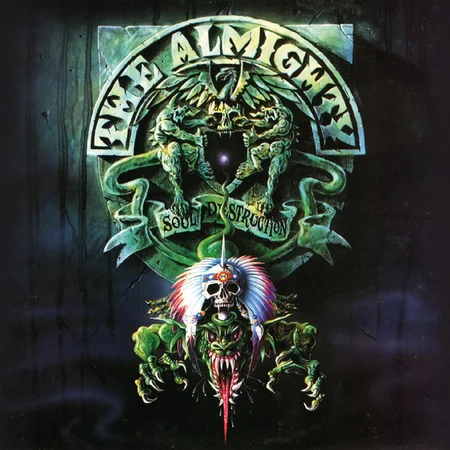
Exploring “Let It Bleed” by The Rolling Stones
The Rolling Stones’ “Let It Bleed” stands as a monumental work in the realm of rock music. Released in 1969, it captures the essence of a turbulent era. The album’s blend of rock, blues, and country reflects the band’s evolution. It also showcases their ability to channel the cultural upheavals of the time into their music. As we delve into this iconic album, we will explore its creation, recording process, commercial success, and lasting legacy.
In this article, we will cover the genesis of “Let It Bleed,” the recording process, its commercial performance, and its influence on music. Additionally, we will analyse the tracks, discuss the album’s promotion, and explore its impact on popular culture. Join us as we unravel the story behind one of The Rolling Stones’ most celebrated albums.
| Attribute | Details |
|---|---|
| Release Date | December 5, 1969 (UK) |
| Album Title | Let It Bleed |
| Genre | Rock, Blues, Country |
| Total Runtime | 42:21 |
| Number of Tracks | 9 |
| Record Label | Decca (UK), London (US) |
| Recording Studio | Olympic Studios, London; Elektra Sound Recorders, Los Angeles |
| Producer(s) | Jimmy Miller |
The album’s impact is undeniable, influencing countless artists and cementing The Rolling Stones’ place in music history. Mick Jagger once described it as an “end-of-the-world song” collection, reflecting the era’s angst and turmoil. Keith Richards noted the album’s ability to capture the band’s raw energy and creativity. These sentiments echo the enduring significance of “Let It Bleed” in the music industry.
The Genesis of “Let It Bleed”
As the 1960s drew to a close, the music world was in a state of flux. The Rolling Stones were at the forefront, having already made their mark with albums like Beggars Banquet. However, “Let It Bleed” marked a turning point, both for the band and the music scene. It was a period of experimentation and change, reflected in the album’s diverse soundscapes.
The Rolling Stones had been evolving rapidly, with their previous works laying the groundwork for “Let It Bleed.” The departure of Brian Jones and the introduction of Mick Taylor brought fresh dynamics to the band. This shift influenced the album’s direction, with Taylor’s guitar work adding a new layer to the Stones’ sound. The album featured contributions from other musicians, such as Merry Clayton and Ry Cooder, enriching its musical tapestry.
The album’s title and artwork are intriguing. “Let It Bleed” suggests themes of release and catharsis. The cover, designed by Robert Brownjohn, features a surreal sculpture of a phonograph. This imagery aligns with the album’s working title, “Automatic Changer,” and reflects its eclectic nature. Financially, the band faced challenges, but their determination to push creative boundaries paid off.
| Band Member | Instruments |
|---|---|
| Mick Jagger | Lead Vocals, Harmonica |
| Keith Richards | Guitars, Bass Guitar, Backing Vocals |
| Charlie Watts | Drums |
| Bill Wyman | Bass Guitar, Autoharp, Vibes |
| Mick Taylor | Slide Guitar, Guitars |
Recording Process
The recording sessions for “Let It Bleed” were as dynamic as the album itself. Spanning from November 1968 to November 1969, they took place in Olympic Studios, London, and Los Angeles studios. The process was marked by change, with Brian Jones’ declining health leading to his departure. His contributions to the album were limited, paving the way for Mick Taylor’s involvement.
Jimmy Miller, the producer, played a crucial role in shaping the album’s sound. Known for his work with Traffic and Blind Faith, Miller brought his expertise to the sessions. The engineering team, led by Glyn Johns, ensured the album’s technical brilliance. Together, they navigated the challenges of recording during a period of transition for the band.
The studios used for recording were equipped with state-of-the-art technology for the time. Although specific equipment details are not fully documented, it is likely that classic gear like Neumann microphones and Urei compressors were employed. These tools, combined with the band’s creativity, contributed to the album’s rich sonic landscape.
| Likely Hardware | Description |
|---|---|
| Neumann Microphones | Used for vocals and instruments |
| Urei Compressors | For dynamic control |
| Fender Amps | Guitar amplification |
The recording sessions were not without their challenges. The band faced the pressures of evolving their sound while maintaining their core identity. Yet, the result was a collection of tracks that captured the spirit of the times. The album’s producer, Jimmy Miller, also worked on other notable albums, adding to his impressive discography.
| Producer | Artist | Album | Year |
|---|---|---|---|
| Jimmy Miller | Traffic | Mr. Fantasy | 1967 |
| Jimmy Miller | Blind Faith | Blind Faith | 1969 |
| Jimmy Miller | Spooky Tooth | Spooky Two | 1969 |
Commercial Performance and Reception
Upon its release, “Let It Bleed” achieved significant commercial success. It topped the UK Albums Chart and reached number three on the US Billboard 200. The album’s blend of genres and powerful lyrics resonated with audiences worldwide. Its commercial performance solidified The Rolling Stones’ status as rock icons.
To provide a broader perspective, let’s examine the discography of The Rolling Stones and where “Let It Bleed” fits within their body of work.
| Album | Year | Sales Data |
|---|---|---|
| The Rolling Stones | 1964 | 1.25 million |
| 12 X 5 | 1964 | 1 million |
| Out of Our Heads | 1965 | 2.5 million |
| Aftermath | 1966 | 3.5 million |
| Between the Buttons | 1967 | 2.5 million |
| Beggars Banquet | 1968 | 3.25 million |
| Let It Bleed | 1969 | 5 million |
| Sticky Fingers | 1971 | 6.5 million |
| Exile on Main St. | 1972 | 4.5 million |
The album received numerous accolades, including being inducted into the Grammy Hall of Fame in 2005. It remains a staple on “greatest albums” lists, further cementing its place in music history. In 1969, other notable albums were released, such as Abbey Road by The Beatles and Led Zeppelin II by Led Zeppelin, illustrating the competitive landscape of the time.
Other significant events in 1969 included the Woodstock Festival and the Apollo 11 moon landing. These cultural milestones, alongside the release of “Let It Bleed,” highlight the transformative nature of the year. The Rolling Stones’ album captured the spirit of the era, leaving a lasting legacy.
Track Analysis
“Let It Bleed” features a collection of tracks that resonate with listeners. Singles like “Gimme Shelter” and “You Can’t Always Get What You Want” became anthems of their time. Each track offers a unique glimpse into the band’s creative process and the themes they explored.
Below is a table detailing the tracks on the album and their respective details.
| Track Name | Length | Writing Credit |
|---|---|---|
| Gimme Shelter* | 4:31 | Jagger/Richards |
| Love In Vain | 4:19 | Johnson |
| Country Honk | 3:09 | Jagger/Richards |
| Live With Me | 3:33 | Jagger/Richards |
| Let It Bleed | 5:26 | Jagger/Richards |
| Midnight Rambler | 6:52 | Jagger/Richards |
| You Got The Silver | 2:51 | Jagger/Richards |
| Monkey Man | 4:12 | Jagger/Richards |
| You Can’t Always Get What You Want* | 7:28 | Jagger/Richards |
Note: Tracks marked with * were released as singles. “Gimme Shelter” and “You Can’t Always Get What You Want” became particularly iconic, though specific chart data is not detailed here.
Song Meaning and Lyrics
The lyrics of “Let It Bleed” delve into themes of social unrest, personal turmoil, and the search for solace. “Gimme Shelter” reflects the era’s chaos, with its haunting refrain capturing the need for refuge. “Midnight Rambler” explores darker themes, blending narrative and metaphor to evoke a sense of menace. “You Can’t Always Get What You Want” offers a poignant message of acceptance and resilience, resonating with listeners across generations.
In “Gimme Shelter,” the line “It’s just a shot away” conveys the immediacy of danger and the yearning for safety. This song’s power lies in its ability to encapsulate the tumultuous spirit of the late 1960s. Meanwhile, “Midnight Rambler” employs vivid imagery to depict a shadowy figure, creating an atmosphere of tension and intrigue.
The collaboration between Mick Jagger and Keith Richards shines through in these tracks, with their songwriting capturing the complexities of human experience. Guest artists like Merry Clayton add depth to the album, their contributions enhancing its emotional impact.
Touring and Promotion of Let It Bleed
The promotion of “Let It Bleed” involved a strategic blend of media appearances and live performances. The Rolling Stones embarked on a tour to support the album, performing across the United States in 1969. This tour was notable for its high-energy shows and the band’s ability to captivate audiences.
The tour featured a series of 17 shows, with notable performances at venues like Madison Square Garden. The band was joined by other artists, creating a dynamic lineup that thrilled fans. Despite the tour’s success, it was marred by the infamous Altamont Free Concert, where violence overshadowed the music.
Influences and Legacy
“Let It Bleed” was shaped by various musical influences, from blues legends like Robert Johnson to the emerging sounds of country rock. These elements combined to create a unique sonic landscape that resonated with listeners. The album’s legacy is evident in the artists it has inspired, from Led Zeppelin to contemporary musicians.
Below is a table highlighting the influences on “Let It Bleed” and the artists it has influenced.
| Influences on “Let It Bleed” | Artists Influenced by “Let It Bleed” |
|---|---|
| Robert Johnson | Led Zeppelin |
| Chuck Berry | The Black Keys |
| Country Blues | Jack White |
The year 1969 was a pivotal moment in history, marked by cultural and global events. The Woodstock Festival symbolised the peak of the counterculture movement, while the moon landing represented a leap in human achievement. In music, the release of “Let It Bleed” captured the zeitgeist, influencing the sound and direction of rock music.
Five Things about Let It Bleed
“Let It Bleed” is an album full of fascinating details and stories. Here are five verified facts that offer deeper insight into its creation and impact.
| Fact | Details |
|---|---|
| Brian Jones’ Last Contribution | Jones played on two tracks before leaving the band. |
| Mick Taylor’s Debut | “Let It Bleed” was Taylor’s first album with the Stones. |
| Iconic Album Cover | Designed by Robert Brownjohn, it features a surreal sculpture. |
| Chart Success | The album topped the UK Albums Chart and reached #3 in the US. |
| Cultural Impact | “Gimme Shelter” became an anthem of the era. |
Media and Television Usage
The music of “Let It Bleed” has found its way into various media, enhancing films and TV shows with its evocative sound. Here is a table detailing some of these appearances.
| Song Title | Media | Year |
|---|---|---|
| Gimme Shelter | The Departed | 2006 |
| You Can’t Always Get What You Want | The Big Chill | 1983 |
Critical Reviews and Retrospectives
“Let It Bleed” has been the subject of numerous reviews and retrospectives. Critics have praised its raw energy and thematic depth. Here is a table summarising some notable reviews.
| Publication | Review Score | Notable Quote |
|---|---|---|
| Rolling Stone | 5/5 | “A landmark album in rock history.” |
| NME | 9/10 | “A gritty masterpiece.” |
After Let It Bleed
Following the release of “Let It Bleed,” The Rolling Stones continued to evolve. The early 1970s saw the release of albums like Sticky Fingers and Exile on Main St., further cementing their legacy. The band’s popularity soared, despite lineup changes and personal challenges.
As of 2025, The Rolling Stones remain active, with plans for a European tour in 2025. Their enduring appeal and influence continue to shape the music landscape, proving their status as one of rock’s greatest bands.
Conclusion
“Let It Bleed” remains a powerful testament to The Rolling Stones’ artistry and resilience. Its themes and music continue to resonate, reflecting the band’s ability to capture the essence of an era. As we look to the future, “Let It Bleed” stands as a beacon of creativity and cultural significance.
Further Reading
For more on The Rolling Stones, explore our own blog articles and podcast episodes. You can also visit the Wikipedia page for “Let It Bleed” and the official The Rolling Stones website.
Let us know in the comments what your thoughts are on Let It Bleed by The Rolling Stones. Did we miss anything? Share your experiences and join the conversation!





